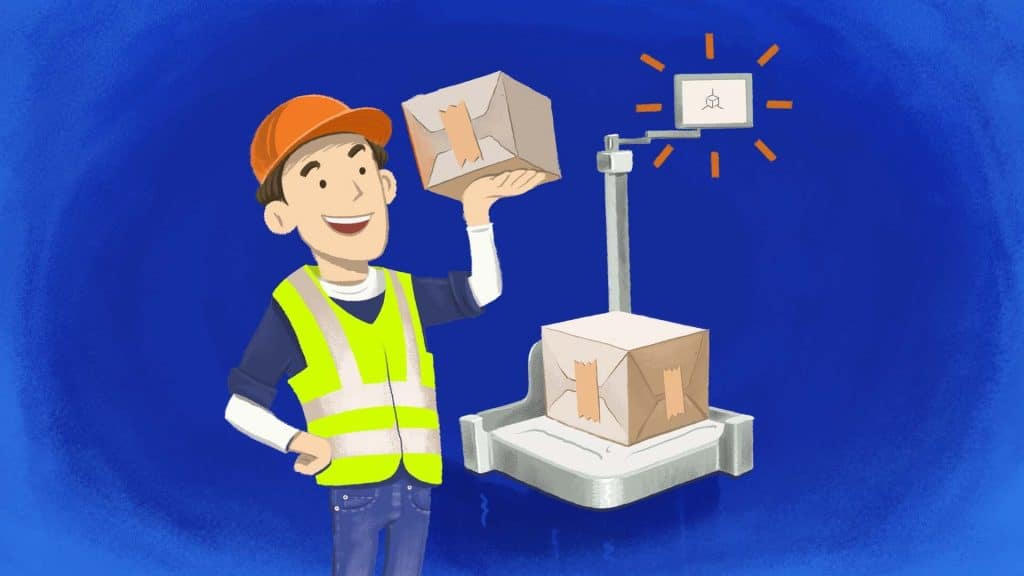
Whether you are an Amazon Marketplace seller or an online retail brand running out of a garage, sellers of all sizes must navigate certain ecommerce challenges. One of them is packing optimization.
Packing optimization is selecting the best way to house and protect your products in shipment. This includes identifying the ideal box, carton, envelope, or case for each shipment, choosing the perfect packing strategies to protect your merchandise in transit, and selecting environmentally conscious packaging materials.
Despite all the considerations for product optimization, online retailers’ interest in the process typically stems from a desire to cut logistical costs. It makes sense. If you’re not careful, the shipping costs associated with last-mile delivery can wreak havoc on your bottom line.
Most shipping and freight services establish these costs using dimensional weight (dim weight).
Understanding Dimensional Weight Is Key to Understanding Packing Optimization
Dimensional weight (sometimes called volumetric weight) compares two calculations: the physical volume of the item to be shipped (found by multiplying the length, width, and height dimensions) and its weight.
Providers maintain both volume- and weight-based rates applied to each package. The higher of the two resulting values is the dim weight shipping cost. The logic behind this billing strategy is twofold:
- The heavier an item is, the more energy (fuel) it requires to transport.
- The larger an item is, the less space there is for other items.
While it is possible to work with carriers to negotiate more favorable rates, dimensional weight typically remains the key metric in ultimately establishing the shipped price per package. That means that one of the most productive ways to keep your shipping costs down for your customers and your bottom line is to keep your dim weights as low as possible.
No matter the size of your ecommerce business, there are lessons to be learned from the packing optimization practices employed by ecommerce industry leaders like Amazon, Walmart, and Staples.
Focus On the Same Shipment Packaging Metrics Ecommerce Marketplaces Do
When it comes to minimizing dim weight packaging costs, sellers face the double challenge of minimizing both package volume and weight simultaneously. This is a challenge faced by all ecommerce sellers, large and small.
Small improvements and optimizations can add to large landed-cost savings when multiplied over significant orders. As such, it can be helpful to borrow notes from industry leaders and mimic some of their best packing optimization practices.
Optimizing Packing Weight
Weight is a fairly cut-and-dried metric. Your products weigh what they weigh. The only optimizations worth focusing on are how much weight you put into a single carton and the weight of your packaging.
All shipping carriers have certain weight thresholds that trigger big jumps in shipping costs. In some cases, it is more cost-effective to separate an order into multiple cartons to avoid having to pay the overweight shipment fees associated with putting the entire order in a single carton.
Online marketplaces like Walmart and Amazon account for this with shipping algorithms designed to optimize what and how much to put in a single carton. This is a practice that your logistics workflow should include as well.
When weighing outgoing orders, your shipping protocols must account for the red lines indicating overweight (and thus more expensive) packages. The other piece of this equation is the actual shipping materials you use.
One of the primary goals of every shipment is to arrive at its destination without getting damaged en route. As a seller, you are responsible for selecting packaging materials that ensure customers receive their orders in the condition they expect.
Amazon routinely conducts studies and applies machine learning (ML) data to ensure that the ideal packaging material is selected for each type of order they process. While you may not have access to the same degree of internal analytics that a global corporation might, you certainly can (and should) be reflecting upon the ideal packaging materials for your products (more on this later).
That said, you should also consider the weight that your packing materials add. This is particularly true for products where weight overrides volume in the dim weight shipping cost calculations. If cutting packaging weight is to be a priority, start with products that fall into this category.
Optimizing Packing Volume
Regarding volume, carton optimization (sometimes referred to as cartonization) is an ever-evolving science on how to best orient and combine items in a shipping box. Too much space can increase shipping costs, and packing too many items in a single oversized or overweight box can trigger additional fees.
One way marketplaces like Amazon are approaching this issue is by moving to custom-sized cartons designed to perfectly fit products and shipments. Sometimes, machines fabricate corrugated cardboard boxes tailored to individual order dimensions.
Further advancements include machines that use plastics and polymers to create even more customizable (and lighter) package sizes and shapes. The rise of on-demand packaging systems like these will allow logistics teams to create shipping materials to custom specifications and minimize overall package volumes.
While these machines and services may be outside the reach of smaller online retailers, the principles behind their benefits are not. When deciding on the cartons, cases, and envelopes to order for your shipping needs, focus on the SKU dimensions in your inventory.
Having appropriately sized boxes for individual item sales can help reduce dim weight and, in turn, shipping costs. Along those same lines, consider kitted bundles and the most popular SKU combinations you sell.
Keeping cartons of the ideal size on hand for these orders can help ensure that you aren’t forced to routinely pay for carton volumes that exceed your needs. Packing optimization should also be considered when packaging new SKUs you plan to add to your existing catalog.
When designing the packaging for a new product, consider dimensions that are similar to or complementary to the SKUs you are already selling. This will make life easier for your warehouse and fulfillment teams and potentially lower the product’s cost of goods sold (COGS).

Packing Optimization Is About More Than Just Size
Beyond the dim weight, other packing-optimization components are worth considering. Chief among them are durability and sustainability. While all packing decisions should be evaluated for their impact on dim weight calculations, failing to meet customer expectations can cost more than a few extra dollars per package shipped.
Protect Your Merchandise
Damaged orders will not only result in unsatisfied customers but, if they become common, can also result in being banned from your most critical third-party marketplaces. Your optimal packing configurations may require additional protective material, depending on the shapes, contents, and overall fragility of the items you ship.
Cushioning material and air pillows can keep in-box movement to a minimum by filling voids and bracing merchandise. Bubble wrap and packing fill material can be used to wrap and add extra insulation to fragile and/or awkwardly shaped items.
In most cases, these protective packaging materials only add nominal mass to your overall package weight. In the long run, taking these steps to ensure safe travels for your merchandise is significantly less costly than RMAs, dissatisfied customers, and marketplace-imposed penalties.
Choose Sustainable Packing Materials and Demonstrate Your Brand’s Commitment to an Eco-Friendly Future
This continues to be an ongoing priority for big-name ecommerce players like Amazon. While minimizing packaging is a big part of the equation, the packaging materials are just as important.
While your ecommerce brand may not be the next Amazon, continued advancements in affordable, recycled, and biodegradable packaging materials allow your business to take a green approach to boxing and protecting your customers’ orders.
As more customers begin to consider the sustainability and recyclability of the products they buy, this environmentally conscious position will grow in importance. Moreover, cities, states, and countries are starting to see stricter measures regarding Styrofoam and plastic waste.
Making a proactive shift to recycled and recyclable packing materials can prevent you from being reactive later.
Contact us directly for a free demo of the Descartes Sellercloud family of products and tools that can help you streamline your workflows and spur omnichannel growth.




